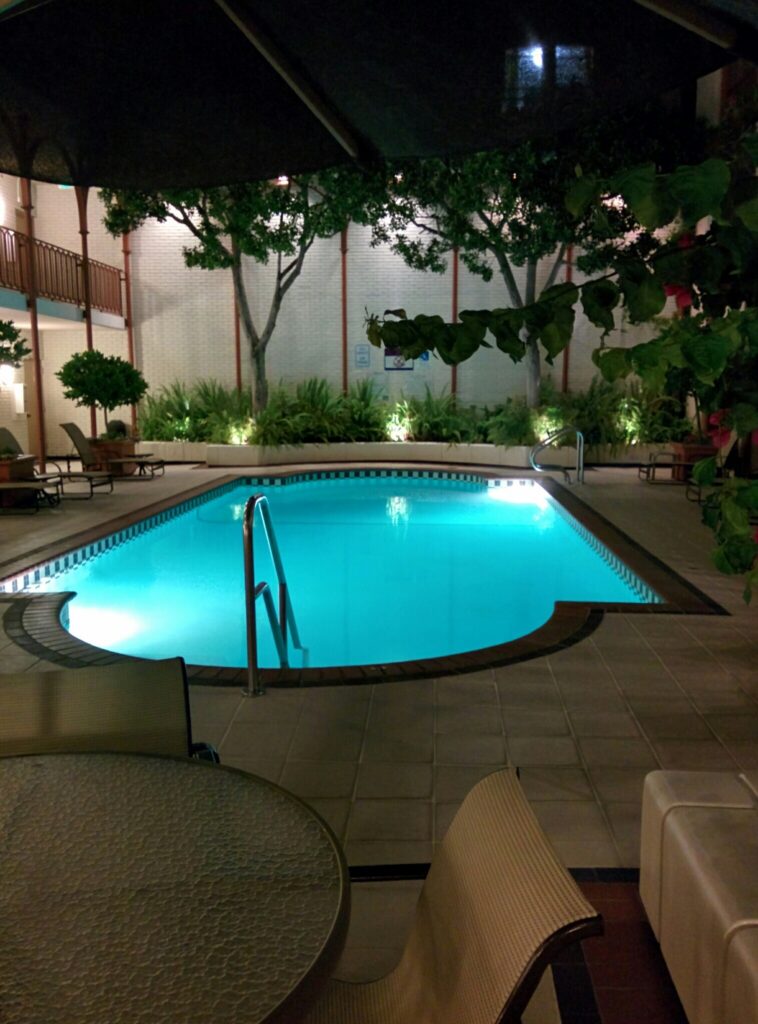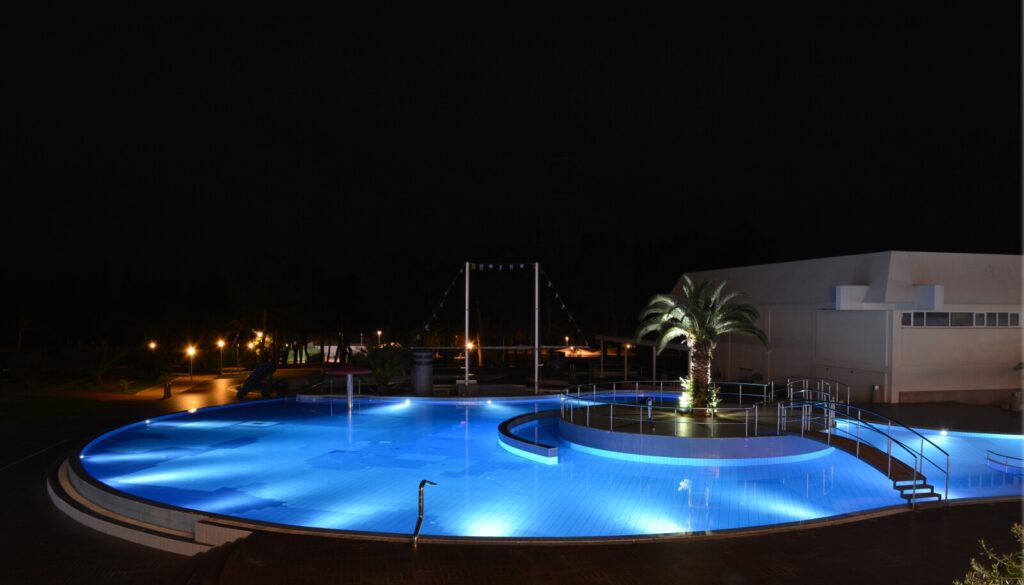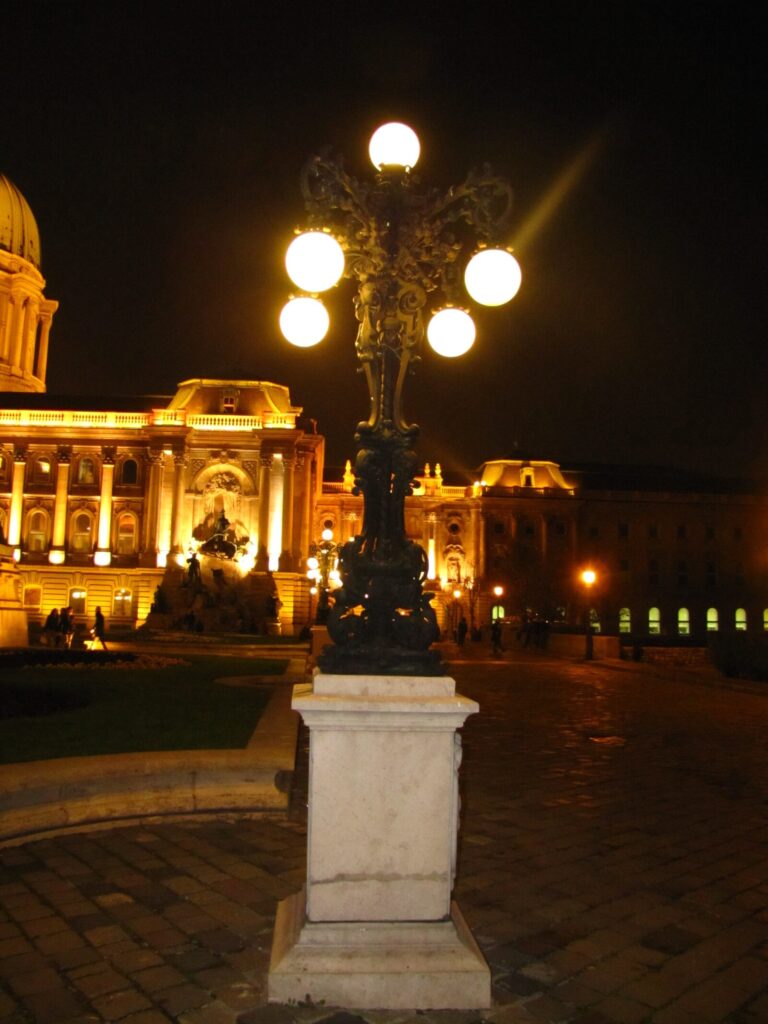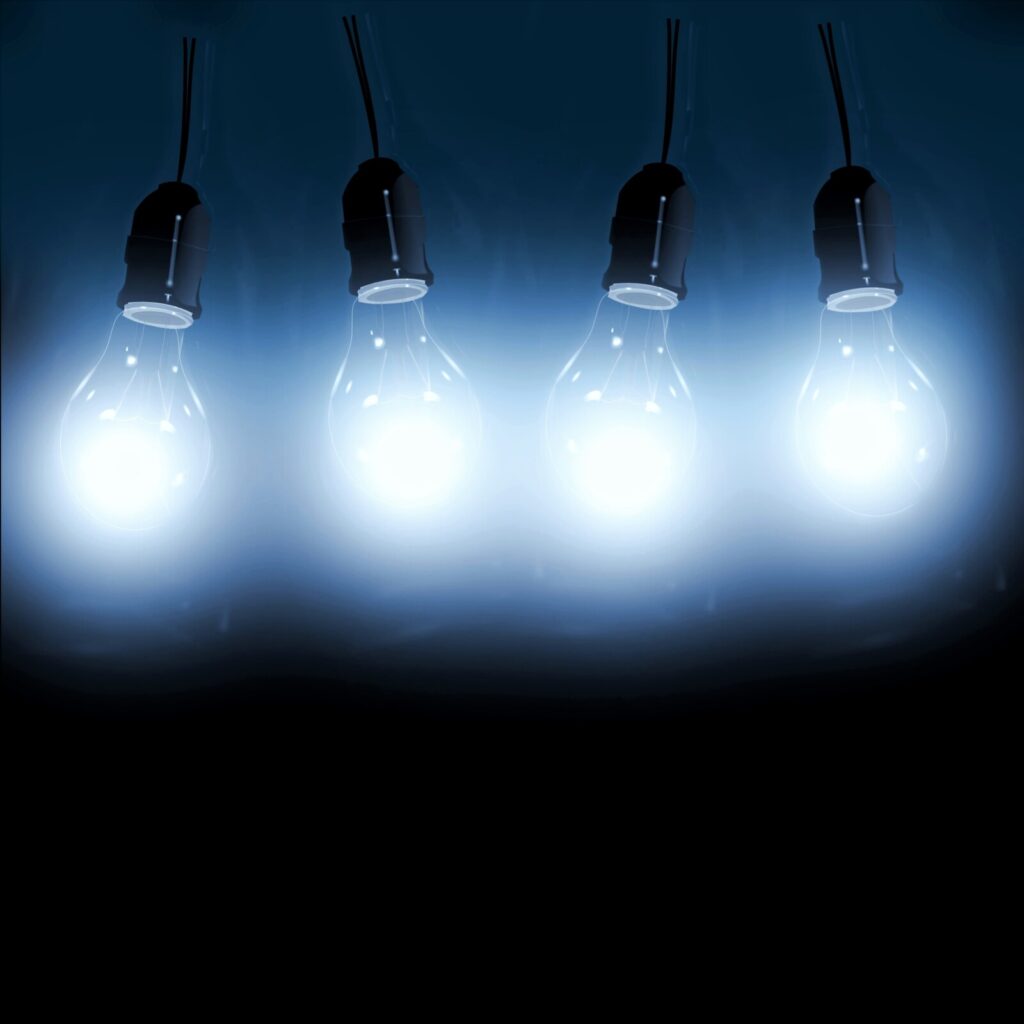High-quality swimming pool lights are essential to get the most enjoyment out of your pool after dark. If you can’t use the pool, what’s the point? Even if you want to lounge on some floaties and catch up with a friend or family member, you’ll need some good lighting to navigate your way around safely. This blog post will explain how to choose the best type of lighting for your swimming pool.

Why is swimming pool lighting important?
Swimming pool lighting is essential for several reasons:
- It makes the pool safer and more enjoyable to use.
- It makes the pool clearer to see, so you can enjoy swimming at night or during twilight hours.
- It also increases safety by making equipment and toys easier to see in the water.
What are the different types of lighting available for pools?
There are a few different types of lighting available for your pool, making it difficult to know which one is right for you. The most common types are as follows:
- Fluorescent lights. These lights run on traditional bulbs and provide a soft glow ideal for relaxing by the pool at night. However, they’re not very energy efficient and may need to be replaced every couple of years (or sooner if they break).
- LED lights. LED lights are more expensive than fluorescent ones but offer many benefits, including better efficiency, safety, and longevity—they last up to 50 times longer than traditional bulbs! Plus, they’re super easy to install yourself.
LED vs. Halogen Pool Lights
If you’re looking for the best pool light, there are two options: LED or halogen. Both have their pros and cons, so it’s essential to consider what matters most to you when choosing which type is right for your pool.
Halogen lights are generally cheaper than LED lights but use more power and don’t last as long. Halogen lights also get hot and can be damaged by rain or snow (if installed outside). On the other hand, if you want something that will last a long time without being too expensive, halogen lights may be a good option for you.
LED lights are more expensive than halogens but use less electricity over their lifetime (and therefore less money). They do not get as hot as halogen bulbs; however, they aren’t quite as durable– meaning they may not hold up well outside in rainy climates or environments with high winds or sandstorms.

Color or White Pool Lights?
When choosing to light for your pool, you’ll have to decide whether you want color or white.
Color pool lights are great for creating a relaxing atmosphere. They can be programmed to change colors throughout the night and create interesting patterns on the water’s surface, making it look like a disco ball.
White pool lights illuminate the water and are better at preventing algae growth in your pool than colored ones—but they can also be used to illuminate the deck area around the perimeter of your swimming hole.
Color lights can illuminate both areas and create pleasing effects on an evening swimmer’s view of both areas (and may also help prevent sunburn).
What Colours Of Pool Lights Are Available?
There are many colors available when you buy pool lights, and choosing the right color for your pool is essential. The color can change the mood of your swimming space but also affects how much light is needed for safety reasons and visibility.
- Blue: This is an excellent choice for a relaxing atmosphere. It helps you sleep better at night and promotes relaxation through circadian rhythms that encourage human melatonin production.
- Green: Due to its similarity with flashing lights associated with epilepsy and seizures, green is an energy-saving alternative to blue or white lighting. However, there are concerns about whether or not it can harm people with epilepsy and seizures (though these claims have not been proven).
- Red: Red is known as the “color of love” because it stimulates passion within couples by heightening romantic feelings like attraction and desire while simultaneously reducing inhibitions—making red lighting an excellent choice if you’re trying something new with someone special in mind!

The Importance of Positioning Your Swimming Pool Lights
The position of your swimming pool lights is essential, and the most common mistake people make is placing them at the top of the pool. As a result, you will not get as much water illumination since other surfaces like glass and dirt particles in the water block the light rays.
The next best option is to place your lights at the bottom of your pool to illuminate all areas on both sides. Using this method, you can see exactly what’s happening in your swimming area and address any problems with cleaning or filtration before they become major problems.
How Many Swimming Pool Lights Do You Need?
How many swimming pool lights you need is dependent on a few factors:
- The size of your pool. If you have a large backyard, you may want to install extra light fixtures so that the entire area is illuminated effectively.
- The amount of time you spend in the pool and how much light you require during different times of the day. For example, if your backyard faces east and west, it will be easier to see in the morning and evening hours than midday—so having more lighting installed at those times can be beneficial for safety and aesthetics.
- The type of light fixture(s) best suits your needs (see below). If you’re looking for something cost-effective but still stylish, try one or two inexpensive LED strip lights along one side of an above-ground pool; these are suitable for private and public pools with limited room constraints (e.g., apartments).
High-quality pool lights are essential to get the most enjoyment out of your pool after dark.
You’ll want to ensure that your pool lights are high-quality and durable. The best way to do this is by finding a company that specializes in custom lighting solutions for pools
. Lighting is essential for safety, enjoyment, security, and even entertainment!
Conclusion
We hope that the information provided here has been helpful for you in making the decision about which type of swimming pool lights are best for your needs. With any luck, this guide will give you some useful information to help you choose a lighting system to enjoy! For more Lighting Ideas, visit our Blog


